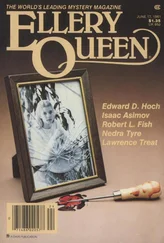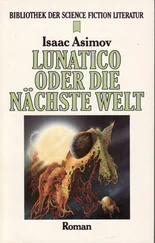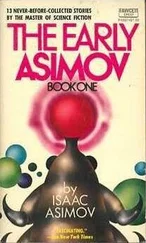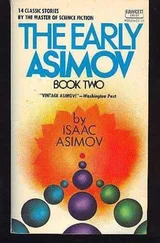Isaac Asimov - Asimov’s Guide To Shakespear. Volume 1
Здесь есть возможность читать онлайн «Isaac Asimov - Asimov’s Guide To Shakespear. Volume 1» весь текст электронной книги совершенно бесплатно (целиком полную версию без сокращений). В некоторых случаях можно слушать аудио, скачать через торрент в формате fb2 и присутствует краткое содержание. Жанр: Культурология, на английском языке. Описание произведения, (предисловие) а так же отзывы посетителей доступны на портале библиотеки ЛибКат.
- Название:Asimov’s Guide To Shakespear. Volume 1
- Автор:
- Жанр:
- Год:неизвестен
- ISBN:нет данных
- Рейтинг книги:4 / 5. Голосов: 1
-
Избранное:Добавить в избранное
- Отзывы:
-
Ваша оценка:
- 80
- 1
- 2
- 3
- 4
- 5
Asimov’s Guide To Shakespear. Volume 1: краткое содержание, описание и аннотация
Предлагаем к чтению аннотацию, описание, краткое содержание или предисловие (зависит от того, что написал сам автор книги «Asimov’s Guide To Shakespear. Volume 1»). Если вы не нашли необходимую информацию о книге — напишите в комментариях, мы постараемся отыскать её.
Asimov’s Guide To Shakespear. Volume 1 — читать онлайн бесплатно полную книгу (весь текст) целиком
Ниже представлен текст книги, разбитый по страницам. Система сохранения места последней прочитанной страницы, позволяет с удобством читать онлайн бесплатно книгу «Asimov’s Guide To Shakespear. Volume 1», без необходимости каждый раз заново искать на чём Вы остановились. Поставьте закладку, и сможете в любой момент перейти на страницу, на которой закончили чтение.
Интервал:
Закладка:
When Hercules was a year old, according to legend, the jealous Juno (who was angry because Hercules was the offspring of one of Jupiter's many extramarital ventures) sent two serpents to kill him in the cradle. The infant Hercules seized each serpent in one of his baby fists and strangled it. The diminutive page is therefore not so ridiculous a representation of Hercules as might be thought. He represents Hercules, the Heroic Babe.
Dead…
The rest of the masque of the Nine Worthies is reduced to a shambles. Holofernes, trying to make the Judas Maccabeus speech for himself, is teased into silence. Armado, who comes next as Hector, can make no more headway.
Costard is urged on by Berowne to accuse Armado of making Jaquenetta pregnant, and for a minute the audience is made to think there will be a mock duel between the two, but all is interrupted by the arrival of a messenger. He comes with news of the Princess' father, the King of France. The Princess guesses at once:
Dead, for my life!
—Act V, scene ii, line 721
Henry III was stabbed on August 1, 1589, and died the next day. This may have nothing to do with the play at all, for there is a good chance it was written before then.
The French King's death, in the play, is a convenient device to end the developing and increasingly intense game of courtly love before it is forced to graduate into something else. The unreal world of the Navarrese court is forced to face reality, for the Princess must return to Paris to face the difficulties of a succession.
The men insist that though the game is over, their love is real. The ladies order them to remain austere, as they had originally planned to do, for one year anyway and if, at the end, they are still in love, that love will be returned.
And so love's labor is lost-for a year. Yet the audience may suppose that the year will pass and that love will then win.
15. The Taming Of The Shrew
The taming of the shrew, written, possibly, in 1593 or 1594, is a play within a play. At least it starts out so with what Shakespeare calls an "Induction" ("Introduction") representing the frame within which the play proper is presented.
… Richard Conqueror
The Induction begins with Christopher Sly, more than half drunk, being thrown out of an alehouse by an irate landlady who demands money for the glasses he has broken; money he refuses to pay.
With the owlish gravity of drunkenness, he rejects the names she calls him. He says:
… the Slys are no rogues.
Look in the chronicles: we came in with Richard Conqueror.
—Induction, scene i, lines 3-4
Christopher Sly is, as he says later, a tinker, a profession lost to the modern world. A tinker was a solderer and repairer of kettles, pots, and other such household metalware, the name of the profession coming from the tink-tink of a small hammer against the utensil.
It did not take much capital or much intelligence to be a tinker, and while tinkers acted as though they were general handy men, they usually couldn't go much beyond solder or a nail, so that we now have the verb "to tinker," meaning "to fiddle with, rather unskillfully."
Tinkers could scarcely make a living if they sat in one place and waited for neighbors' kettles to come apart. They were usually itinerant, carrying their few tools on their backs and going from village to village. They were distrusted, as strangers usually are, and perhaps a number of them used the tinker's equipment only as a blind and were really beggars, or even smalltime thieves and con men. At any rate, tinkers were traditionally considered rascals and rogues.
Christopher Sly, then, being a tinker, and showing himself in costume and action to be an utter no-account, is amusing in claiming to be descended from one of the Norman barons who conquered England in the eleventh century.
What's more, Sly's amalgamation of William the Conqueror and Richard the Lion-Hearted (the latter was the great-great-grandson of the former) helps the humor with the audience. Even the least sophisticated of the Elizabethans would surely catch the error.
… for Semiramis
Christopher Sly falls into a drunken slumber, just as a Lord and his hunt-tag party come on the scene. Finding Sly, it occurs to the Lord to play an elaborate practical joke. They are to take Sly, dress him in fine clothes, and, when he wakes, convince him that he is a great nobleman who for many years has been mad and thought himself a pauper.
This is done, and in the second scene of the Induction, Sly, awakening with a call for small beer, finds himself attended by a variety of obsequious servants who wait on him with the greatest tenderness and with a wealth of classical allusions. The Lord himself plays a role as servant and says respectfully:
… wilt thou sleep? We'll have thee to a couch
Softer and sweeter than the lustful bed
On purpose trimmed up for Semiramis.
—Induction, scene ii, lines 37-39
Semiramis is the legendary Queen of Assyria who had become a byword, among the Greeks, for luxury (see page I-403).
Adonis painted…
Among other things, they offer Sly a choice of paintings dealing with mythological subjects. Thus, one servant says:
… We will fetch thee straight
Adonis painted by a running brook
And Cytherea all in sedges hid,
—Induction, scene ii, lines 49-51
This refers to the myth of Venus and Adonis, concerning which Shakespeare had written a long poem a year or two before he wrote this play (see page I-5).
Cytherea is an alternate name for Venus, derived from the fact that an important seat of her worship was the island of Cythera, just off the southeastern corner of Greece.
We'll show thee Io. ..
The Lord offers a second choice:
We'll show thee Io as she was a maid
And how she was beguiled and surprised.
—Induction, scene ii, lines 54-55
Io was a daughter of the river god Inachus in the Greek myths, and Jupiter fell in love with her. The myth has nothing to say about how Io was "beguiled and surprised," though Jupiter used guile on other young ladies, notably Europa (see page I-44). The myth concentrates instead on the manner in which Jupiter's jealous wife, Juno, persecuted Io afterward (see page I-86).
… Daphne roaming. ..
A third choice is presented:
Or Daphne roaming through a thorny wood,
Scratching her legs that one shall swear she bleeds,
And at that sight shall sad Apollo weep,
—Induction, scene ii, lines 57-59
Daphne was a nymph sworn to virginity whom Apollo loved. She rejected his advances and fled from him when he tried to seize her. He pursued and would have caught her, but at the last minute, her mother, Gaea (the earth goddess), turned her into a laurel tree.
Little by little, then, Sly is convinced that after all he is a lord. He even begins to speak in blank verse instead of the usual prose. And to cap the climax, a play is presented for his edification, and it is this play which is what we usually think of as The Taming of the Shrew.
… fair Padua…
The play within a play opens with two young men, Lucentio and his servant Tranio, entering. Lucentio summarizes the situation:
Tranio, since for the great desire 1 had
To see fair Padua, nursery of arts,
I am arrived for fruitful Lombardy,
—Act I, scene i, lines 1-3
Padua is a city in northeastern Italy a little over twenty miles west of Venice and noted for its university.
Читать дальшеИнтервал:
Закладка:
Похожие книги на «Asimov’s Guide To Shakespear. Volume 1»
Представляем Вашему вниманию похожие книги на «Asimov’s Guide To Shakespear. Volume 1» списком для выбора. Мы отобрали схожую по названию и смыслу литературу в надежде предоставить читателям больше вариантов отыскать новые, интересные, ещё непрочитанные произведения.
Обсуждение, отзывы о книге «Asimov’s Guide To Shakespear. Volume 1» и просто собственные мнения читателей. Оставьте ваши комментарии, напишите, что Вы думаете о произведении, его смысле или главных героях. Укажите что конкретно понравилось, а что нет, и почему Вы так считаете.







